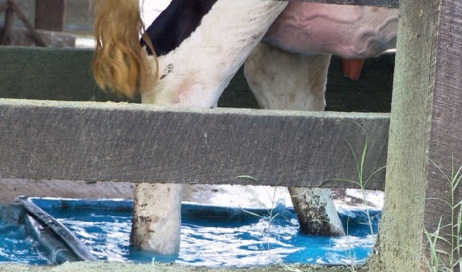About Copper Foothbaths for Dairy Cows
“By studying this issue now, we may be able to help producers develop irrigation management strategies that keep copper from getting to potentially harmful levels.” Ippolito joined with ARS soil scientist David Tarkalson and microbiologist Tom Ducey to study how copper levels in the wastewater affected crop performance and soil microbial activities. Tarkalson also works in Kimberly, and Ducey is with ARS’s Coastal Plains Soil, Water, and Plant Research Center in Florence, South Carolina.

ARS scientists are studying how copper levels in the wastewater affect crop growth and soil microbes.
This research is part of Climate Change, Soils, and Emissions (#212), Agricultural and Industrial Byproducts (#214), and Water Availability and Watershed Management (#211), three ARS national programs described at www.nps.ars.usda.gov.
Copper sulphate and formaldehyde are raw materials which are used globaly, the negative influence on environment is huge, beside that formaldehyde is carcenogenic.
It's also proved that formaldehyde has no possitive influence on Digital dermatitus at all, copper sulphate is proven not to be effective, but had some influence, the main reason of using it was Cheap.
In Europe there are products which are proven to be effective . Investigation has proven that alternative products are more effective then antibiotic, or copper sulphate :
http://veterinaryrecord.bmj.com/content/169/21/555.full.pdf+html?sid=ff47a25d-18aa-4e27-8ec0-7b3665fbc9de
I would discourage the use of copper sulphate. First of all experience teaches there is a tendency to overdose. Second the copper sulphate will not fully dissolve. In the Ntherlands the use of copper in footbaths is forbidden, because of environmental reasons.
If you are allowed to use copper, then look for liquid forms. There are mixtures of liquid copper and zinc containing products which are easy to use and at much lower dosages than the coppersulphate.
Thanks for good information for soil hazzards on commercialization dairy industry.It should be study on consuming such type of grass by animals and effects on milk residues.
How much sulfate copper is needed for Foot bath for dairy cow and in what percentage?
Thank
Golzar
Dairy manager











